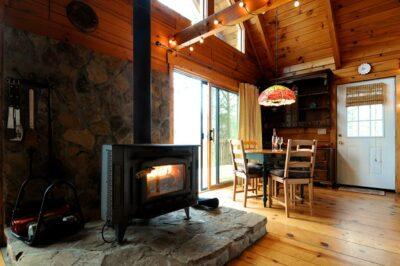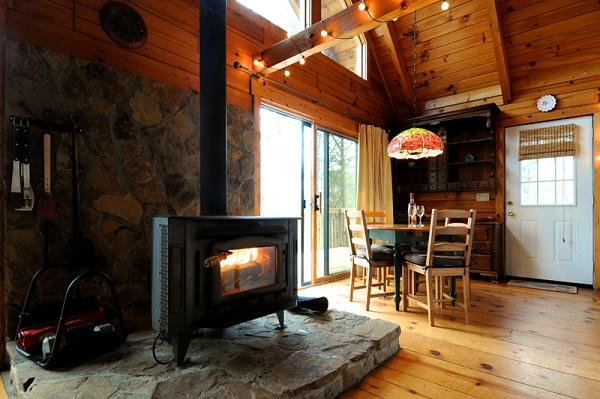
Most of the wood and pellet-burning stoves and furnaces found in American homes would be illegal under new air quality rules proposed this month by the Environmental Protection Agency. The agency is inviting comment on proposed regulations that will require new wood stoves and heaters to be 80 percent cleaner.
“The reality is that the wood stove as we know it would go away,” David Kuhfahl, the president of HearthStone Quality Home Products Inc., a wood stove manufacturer, said of the rules.
The rules would impact 80 percent of the stoves on the market. The proposed regulations come after months of the EPA studying the issue. OffTheGridNews.com reported last year on the EPA’s likely intent.
The good news is that the proposed rules will not affect existing wood stoves or heaters. Instead, they would only affect such devices built after 2015. The bad news is that you may be prohibited from selling your old stove or heater — and that a new one will cost more. In Oregon, you already can’t sell your house without taking out the old stove.
The idea behind the new rules is to reduce particulate air pollution by 80 percent by making wood-burning devices more efficient. Some scientists and doctors believe that pollution from wood stoves, wood-burning furnaces and fireplaces is a major threat to public health and should be banned or regulated.
“Particulate matter is a big health issue,” EPA advisor Alison Davis told The Washington Post. Davis said studies had linked particulate matter put off by wood-burning devices to heart attacks, strokes, lunge disease and premature death.
Critics, though, say it is government overreach.
“It seems that even wood isn’t green or renewable enough anymore,” Larry Bell wrote on Forbes.com. “… [It’s the] oldest heating method known to mankind and mainstay of rural homes and many of our nation’s poorest residents. The agency’s stringent one-size-fits-all rules apply equally to heavily air-polluted cities and far cleaner plus typically colder off-grid wilderness areas such as large regions of Alaska and the American West.”
What the EPA is planning to do
Basically, the EPA is proposing a new set of requirements that manufacturers of wood-burning devices will have to meet after 2015. The standards will become stricter over a period of five years.
The Most Versatile Backup Stove In The World Allows You To Cook Anything, Any Time, Any Where
The Proposed New Source Performance Standards for Residential Wood Heaters were published in the Federal Register on Jan. 3. The EPA is accepting comments for 90 days. The EPA is currently taking public comment on the standards and will hold public meetings about the rules in Boston and Seattle.
Here’s what the standards will cover:
- Adjustable rate wood stoves
- Wood-fired boilers
- Outdoor wood-fired boilers or hydronic heaters
- Wood-burning forced air furnaces
- Pellet-burning stoves
- Masonry wood heaters
- Single burn-rate wood stoves
The following heat sources will not be covered by the standards:
- Coal burning stoves or furnaces
- Oil burning stoves or furnaces
- Pizza ovens
- Barbecues
- Outdoor fireplaces
- Fire pits
- Chimineas
- The regulations don’t say whether furnaces that burn two types of fuel such as wood and propane would be affected or not.
“Today’s proposed rule would not affect existing wood stoves and other wood-burning heaters currently in use in people’s homes,” an EPA Fact Sheet noted. “In addition, the proposal would not prohibit or restrict the use of wood-burning appliances for residential heating.”
The proposed rules will not affect indoor fireplaces because the EPA does not consider fireplaces to be effective or efficient heating devices. Nevertheless, some cities are moving to ban fireplaces.
Could Increase the Cost of Wood Stoves by 25 Percent
Complying with the proposed regulations will increase the cost of a new wood stove by 25 percent, a representative for Jotul North America, a stove manufacturer in Maine, told The Portland Press-Herald newspaper. Jotul will need to spend at least $1 million reengineering its stoves to comply with the new rules.
The new rules might actually make air pollution worse because they will encourage homeowners to keep using older, dirtier and cheaper stoves, Jotul president Bret Watson speculated. He noted that there are around seven million older wood stoves in the United States and that retailers only sold 74,000 new stoves last year.
Many homeowners will simply buy used older stoves rather than pay for the newer more expensive models, he said.
Manufacturers Charge EPA Air Pollution Worse
Watson isn’t the only wood stove manufacturer who is critical of the EPA. HeartStone’s Kuhfahl even accused the agency of making the situation worse by refusing to regulate wood burners until now.
Kuhlfahl and Watson believe today’s wood stoves are efficient enough to reduce pollution.
To comment to the EPA on the proposed rules, click here.
Sign up for Off The Grid News’ weekly email and stay informed about the issues important to you










